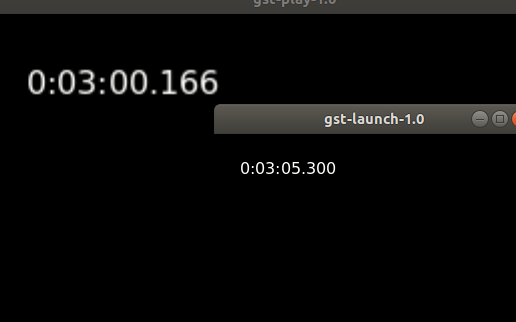Description:
Issue Summary:
I attempted to stream video using the provided GStreamer pipeline and HTTP server, but encountered several problems. Firstly, when accessing the stream via http://localhost:8080/, the video does not appear on the webpage. Additionally, when attempting to play the stream using VLC media player, it remains in a non-runnable state. Furthermore, I experimented with using an HLS sink, but encountered a minimum latency of 4 seconds, which does not meet my requirements. Subsequently, I tried using souphttpclientsink, but encountered difficulties.
Steps to Reproduce:
- Execute the provided GStreamer pipeline:
gst-launch-1.0 v4l2src device=/dev/video0 ! video/x-raw,width=640,height=480,framerate=30/1 ! videoconvert ! queue ! x264enc speed-preset=superfast tune=zerolatency ! h264parse config-interval=-1 ! mp4mux name=mux_av fragment-duration=10 ! souphttpclientsink location=http://localhost:8080/
- Attempt to access the stream via http://localhost:8080/ in a web browser.
- Try to play the stream using VLC media player.
Expected Result:
The video stream should be visible on the webpage when accessed via http://localhost:8080/, and VLC media player should be able to play the stream without issues.
Actual Result:
The video stream is not displayed on the webpage, and VLC media player fails to play the stream.
Additional Information:
I have also attempted to use an HLS sink to reduce latency, but the minimum latency achieved was 4 seconds, which is unsuitable for my use case. Therefore, I am seeking assistance in resolving these issues and successfully streaming video to both a web browser and VLC media player.
pipeline
gst-launch-1.0 v4l2src device="/dev/video0" ! videoconvert ! clockoverlay ! x264enc tune=zerolatency ! mpegtsmux ! hlssink playlist-root=http://192.168.xx.xx:8080 playlist-location=playlist_test.m3u8 location=segment_%05d.ts target-duration=1 max-files=4
Chrome - http://192.168.xx.xx:8080/playlist_test.m3u8
VLC - http://192.168.xx.xx:8080/playlist_test.m3u8
HTTP SERVER CODE: Server.js
var http = require('http');
http.createServer(function (req, res) {
// Set the content type to video/mp4
res.writeHead(200, {'Content-Type': 'video/mp4'});
// When data is received in the request, write it to the response
req.on('data', function(data) {
console.log('STREAM_DATA');
res.write(data);
});
// When the request ends, end the response
req.on('end', function() {
res.end();
});
}).listen(8080);
console.log('Server running at http://localhost:8080/');
